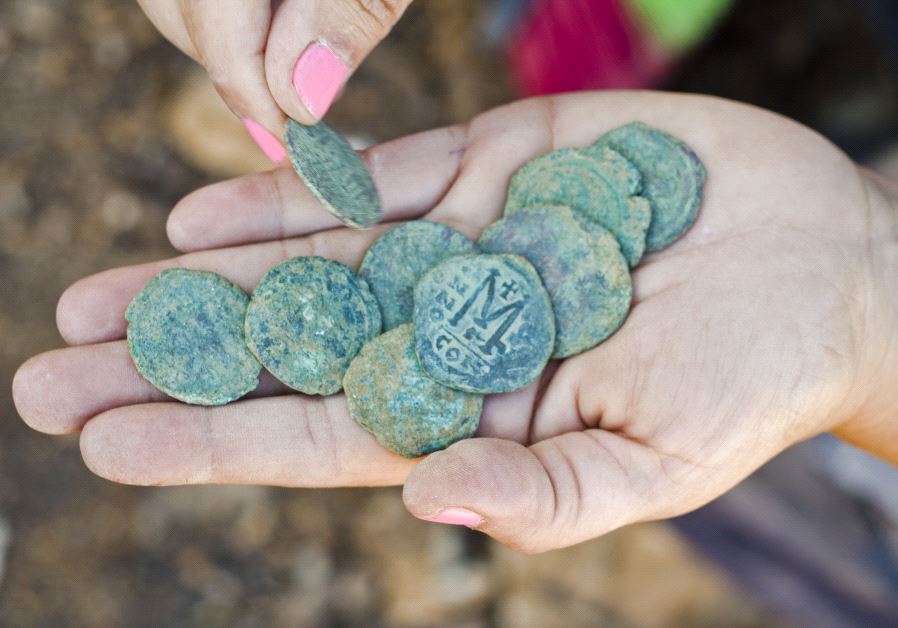Rare 1,400-year-old bronze Byzantine-era coins found near Jerusalem highway
Antiquities Authority: Coins are tangible evidence of the Persian invasion of Jerusalem at the end of the Byzantine period.
 Rare 1,400-year-old bronze Byzantine-era coins found near Jerusalem’s Highway 1(photo credit: YOLI SCHWARTZ/IAA)Updated:
Rare 1,400-year-old bronze Byzantine-era coins found near Jerusalem’s Highway 1(photo credit: YOLI SCHWARTZ/IAA)Updated: